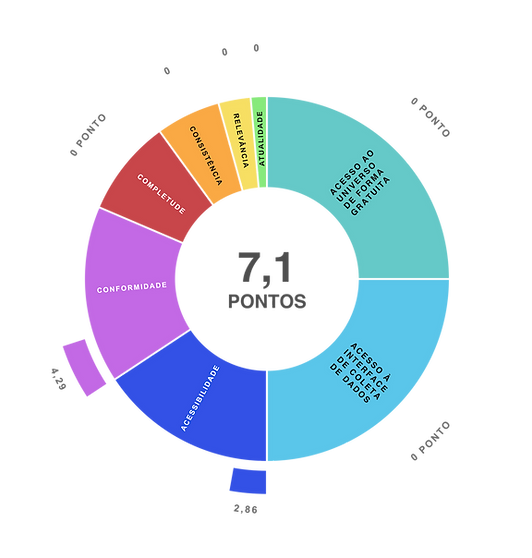
Data Transparency Index
The Social Media Platforms Data Transparency Index (DTI) assesses the degree of transparency and quality of data from the main social networks and messaging applications operating in Brazil.
Launched in November 2024, the ITD follows a structured, systematized and reproducible roadmap, based on data quality criteria, to assess the mechanisms for accessing data for research provided by the main social media platforms operating in Brazil.
The Index is a proposal by NetLab UFRJ to promote data transparency in Brazil, given the scarcity of qualified information for applied social research based on digital data in Brazil.
The full Index can be accessed below.
81 to 100 points
Ideal transparency
61 to 80 points
Regular transparency
41 to 60 points
Precarious transparency
21 to 40 points

Satisfactory transparency
Platform Score Ranges
and Ranking
Irrelevant or null transparency
0 to 20 points
Platform Notes
YouTube's main negative points are the lack of a user interface for data collection and the return of inconsistent and incoherent data with the parameters used in the search. Among the positive aspects, the platform allows full access to the universe of public data through a free API. In addition, YouTube allows for the rapid recovery of recently published data and historical data.
Data transparency: Satisfactory

YouTube

Almost half of the platform's score depended on the 25 points it received for providing CrowdTangle, a data collection interface and API that has been discontinued.
CrowdTangle had several limitations that compromised the completeness of the data: it did not allow access to comments linked to original posts or access to temporary content, such as photos and videos published in stories.
The tool also did not allow the recovery of the entire universe of public data from publications on the platform, limiting the search to publications from pages with more than 25 thousand followers or likes.
Data transparency: Regular


Like Facebook, Instagram made its data available through CrowdTangle, which did not allow the collection of comments, stories and reels, and also prohibited the recovery of the entire universe of public data from the platform.
The main difference between the score received by Facebook and Instagram lies in the dimension of consistency: on Instagram, the links returned by the tool expired almost instantly and went offline.
The technical barriers constantly imposed on content scraping also make the platform lose points in accessibility.
Data transparency: Regular


X/Twitter's rating on ITD is significantly affected by the lack of full and free access to its public data universe. Since 2023, access to the platform's API has been paid, with prohibitive prices, especially for researchers in countries in the Global South. The platform has also not released transparency reports for the Brazilian context since 2021. Nor is there a user interface for collection. On the other hand, it is the only one that adequately flags removed content and, although access is paid, the API offers consistent and complete data.
Data transparency: Precarious
X / Twitter

Despite offering a free API, the need to know the groups beforehand prevents access to the universe of public data and makes it difficult to search for specific topics of interest. Telegram does not offer a user interface for data collection, its API documentation is not detailed and it does not publish periodic transparency reports in Brazil. Among the positive points, the results delivered by the API are complete and consistent with applied filters and the platform does not prevent data scraping.
Data transparency: Precarious


Telegram
By providing a data collection API only to researchers in the US and Europe, TikTok adopts a discriminatory policy against researchers from the Global South. Nor is it providing a user interface for data collection. TikTok's main strength is the publication of transparency reports with details about moderation actions in Brazil.
Data transparency: Irrelevant
TikTok

With several transparency deficiencies, Kwai does not score in 5 of the 6 dimensions evaluated by ITD. Without a user interface for data collection or an official API, Kwai scores points in the accessibility dimension only for not restricting data scraping, which can be done without authentication and via the Web. The platform also does not publish periodic transparency reports on moderation actions in Brazil.
Data transparency: Irrelevant
Kwai


Like Kwai, WhatsApp fails in three priority areas of transparency: it does not offer a free official API for data collection, it does not provide an interface for data collection, nor does it publish periodic transparency reports on moderation actions in Brazil. The score obtained is due to the possibility of data scraping, although the platform does not officially authorize this practice. This precarious situation raises a red flag, since the app is one of the main means for the dissemination of (mis)information in the Global South.
Data transparency: Irrelevant

Observatory of the Disinformation Industry and its Impact on Consumer Relations in Brazil
Support:
